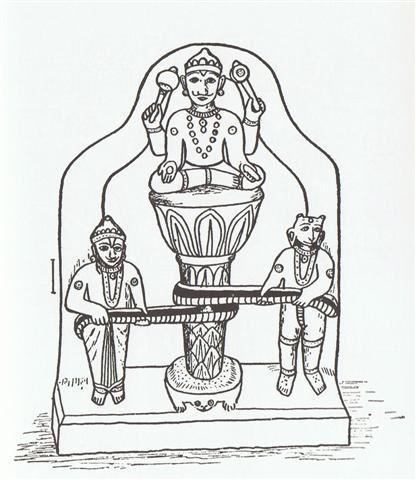Studying this table one easily gets the impression that there is no system at all. But the variations might be due to different signs, i.e. different writers having made different choices about what signs to use (and possibly also about what the details to document should be in the text). Remarkably, in the P text we cannot see both wings. Should I then perhaps have classified these glyphs as belonging to GD42 rather than to GD74?
We can use this opportunity to dive down in order to take a closer look at the features of GD42 on one hand and the features of GD74 on the oither, those features which I once upon a time had decided to use for classifying all the rongorongo glyphs according to type. However, the results of such an excursion will tend to be rather murky. Yet, by looking in my list for all the glyphs belonging to GD74 we can eliminate this type. None of the 6 at the beginning of line Pb5 above can be found in my compartment for GD74. Might they belong to GD23, then?
The raised 'hook in front' of the P glyphs above indeed looks similar to what one often can see in GD23-glyphs. But these P-glyphs have not such a prominent cock's head, so why should they belong to GD23? My solution to this dilemma could have been to perceive these 6 as both GD23 and GD42, that method was used by me in other cases. But here I did not do so. Instead we will find these 6 above only in my compartment for GD42. This was indeed difficult, for we can find a structure I had been forced to create in order to facilitate the classification of 'various species of birds':
Another way of perceiving the P glyphs above is to assume that the creator of the P tablet preferred another 'song text' to the same 'melody' as that which was used by the H and Q creators. And we surely should not count to more than 5 of them. Because Pb5-1 (599 + 157 = 756 → 7 * 108) is equipped with a fish tail in contrast to the male member in front of the 5 cocks.
|





















